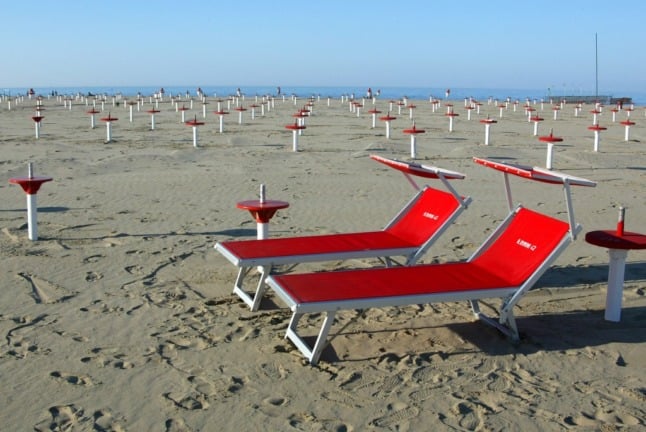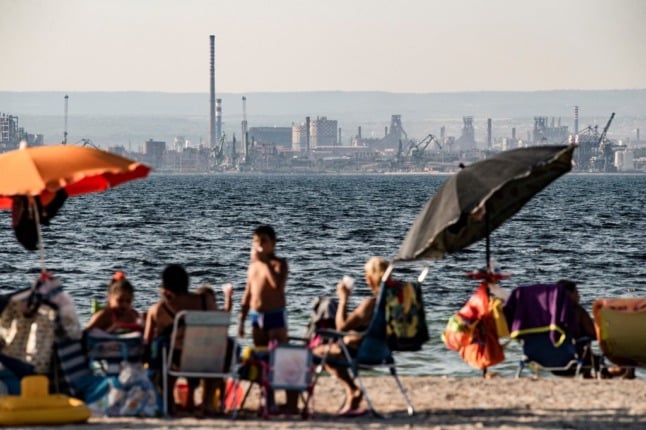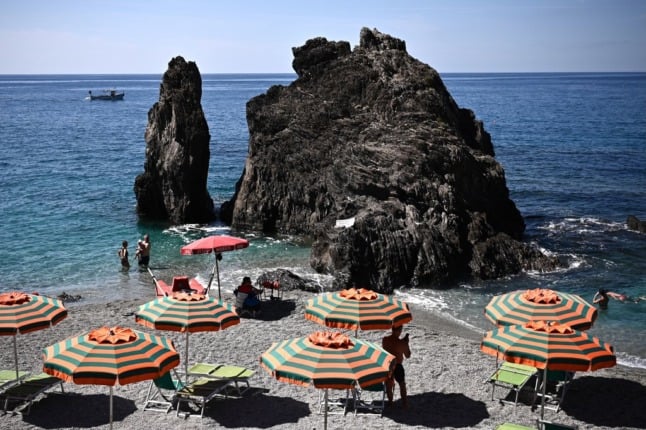Nearly 43 percent of Italian sandy beaches now occupied by private lidos, campsites, resorts or other businesses, the association reports in its latest annual survey on the state of Italy’s coastline.
Based on figures from the Italian government’s coastal monitoring database, the number of lidos alone rose from 10,812 in 2018 to 12,166 by the start of summer 2021, an increase of 12.5 percent. Legambiente estimates that they have doubled since the year 2000.
READ ALSO: What are the Covid-19 rules on Italy’s beaches this summer?
In some parts of Italy as much as 70 percent of sandy coast is taken up by lidos and other concessions, the association says. Liguria is the region that has privatized the most of its coastline (69.9 percent), followed by Emilia-Romagna (69.5 percent) and Campania (68.1 percent).
The so-called Romagna Riviera, the stretch of the Adriatic Coast around Rimini that draws thousands of Italian holidaymakers each summer, is now almost impossible to access for free, the report says, with 90 percent of beaches in Rimini in private hands and 100 percent in Gatteo.

In contrast, Friuli-Venezia Giulia (20.3 percent), Sardinia (20.7 percent) and Sicily (22.4 percent) have kept their beaches relatively free to date – though Sicily has allowed the number of lidos to increase by more than 40 percent in the past three years.
Consumer watchdogs have warned that lidos are hiking their prices this summer to make up for losses and cover extra costs related to the Covid-19 pandemic. Research by consumer study institute IRCAF recently found that June 2021 prices to rent two loungers and an umbrella ranged from €10 per day on some Italian beaches to a whopping €50 on others.
READ ALSO: Holidays in Italy will cost more this summer, consumer watchdog warns
While Italy’s coastline is supposed to be a public asset, there is no national rule about how much of it has to remain free for public use – unlike France, for instance, where at least 80 percent of beaches must be kept clear of concessions for at least half the year.
In Italy the decision is left to each region, and while Puglia and Sardinia have decreed that 60 percent of their beaches should be left free, no other regions protect more than half of their coastline. In five – Friuli-Venezia Giulia, Veneto, Tuscany, Basilicata and Sicily – there is no quota whatsoever that guarantees any of the coastline will remain public.
What’s more, much of the coast that sunbathers can access for free is inferior to the prime beaches where you have to rent your lounger and parasol. According to Legambiente, in many towns free beaches are the “second division” portions of the coast next to rivers or outlet pipes, where the sea is polluted and swimming banned.

In total nearly 8 percent of Italy’s beaches are too polluted to swim at, its report says, with off-limits sections heavily concentrated in Campania (13.5 percent) and Sicily (21.5 percent).
Coastal erosion is also threatening Italy’s coastline, with more than 40 million metres square estimated to have disappeared between 1970 and 2020. Sandy beaches in Abruzzo, Calabria and Sicily are particularly at risk, with more than 60 percent suffering from erosion as global warming causes extreme weather events such as storm surges and tornadoes to become more frequent.
READ ALSO:
- Where to find even more of Italy’s best beaches in 2021
- World Ocean Day: What is Italy doing to protect its seas?
- What is Italy doing about the shocking level of plastic pollution on its coastline?
A growing number of lidos are adopting more environmentally friendly practices, Legambiente points out, including banning single-use plastic, serving locally produced food in beach bars, installing solar panels, protecting dunes and improving access for cyclists and pedestrians instead of cars.
A total of 416 beaches across Italy were awarded international Bandiera blu (Blue Flag) status for 2021, based on sustainability as well as cleanliness, safety and other factors. Find a full list here.



 Please whitelist us to continue reading.
Please whitelist us to continue reading.
Member comments